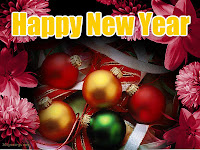
The historians believe that the tradition of celebrating New Year began 4,000 years ago with the Babylonians. Over the years the Egyptians, Romans, Celts upheld the tradition and it is cherished to date in a lavish way. Most countries celebrate New Year on January 01 as established by Julius Caesar when he invented the Julian Calendar in 46 BC. Some countries which have other religions and traditions follow different calendars, celebrating their New Year on other days in the year as per their customs. Following are some New Year facts and traditions engaged in by those who adhere to the Gregorian calendar on the 1st of January.
New Year’s Eve – The celebration of the upcoming year gets geared up on the 31st of December with hotels, pubs, restaurants and other public institutions organizing parties, balls, and other activities to usher in the New Year. People eat, dance, participate in games and contests as they enjoy the closing of the current year and prepare to welcome the upcoming year. In several countries, New Year occurs in the middle of winter and it tends to be extremely cold. Bonfires are built to keep those outside warm until midnight when they greet the New Year with cheerful noise and a display of fireworks, hugs and well wishes for the New Year are exchanged by those in attendance. For those who are far apart, phone calls are made and short messages sent via text on mobiles or computers to friends and family.
New Year’s Day Celebrations – This day is marked with dressing up in new clothes, cleaning the house and spending the day with family, friends and dear ones. Some people visit their friends and family as they exchange well wishes and gifts for the New Year. Many people go to restaurants, malls and multi-complexes on this day and statistics show this to be a very busy day for many establishments. Some go out for picnics or visit exotic tourist destinations to enjoy the day.
New Year Resolutions – This tradition began way back when the early Babylonians made it a point to start the New Year with a clean slate and return any borrowed farm implement to its owner. The tradition of making resolutions on this day has been observed over the years. These days many have both grand and small desires for the New Year like losing weight, giving up smoking, being more organized and more. Unfortunately, many of these desires do not see the light of the second week of the year as they have been shelved during the course of the first week. Credit must be given where it is due for those who are determined enough to see their resolution to a successful conclusion.
New Year’s Parades and Games – There are world famous parades organized by several cities like the Tournament of Roses in Pasadena California , Chinese New Year parade in San Francisco
New Year Greetings - Exchanging New Year wishes during this festive occasion is quite common. As the clock strike midnight of the 31st, people will start greeting their loved ones a Happy New Year. New Year greetings could be in different forms such as traditional paper card, ecard, SMS or email. Depending on the situation, you may send each of them to your recipient this New Year's Day.